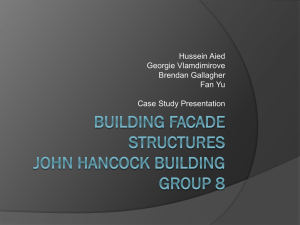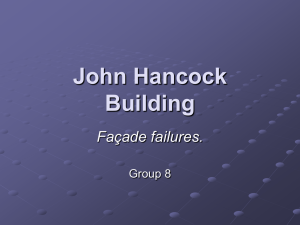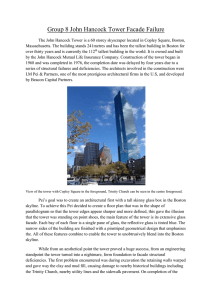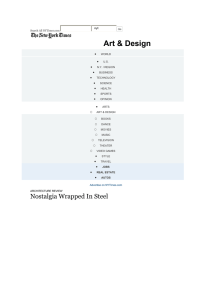Group 8 John Hancock Tower.pptx
advertisement
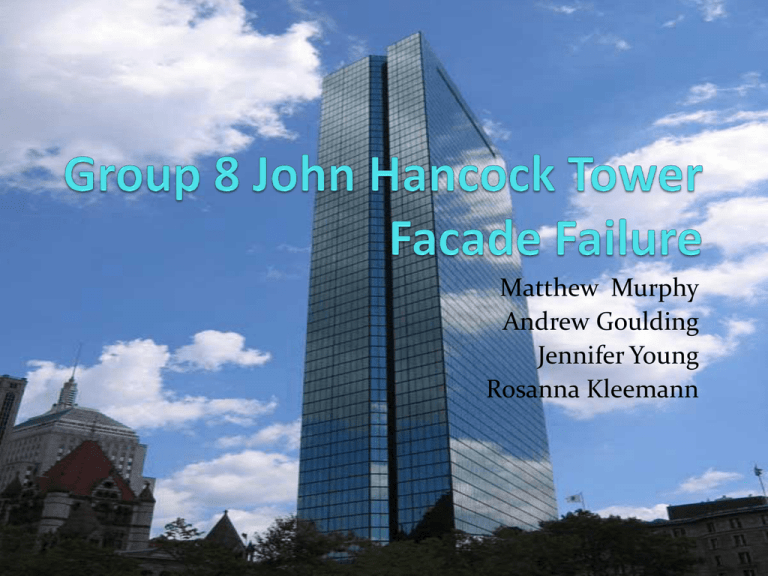
Matthew Murphy Andrew Goulding Jennifer Young Rosanna Kleemann Background 241m (60 storey) Skyscraper in Boston Constructed for John Hancock Insurance Tallest building in New England Designed by I.M Pei and Cobb Constructed 1968-1976 for $175M Plagued by Design and Engineering Flaws Design Changed Skyscraper Design Concrete columns to concrete cores Rectangular to parallelogram floor plan Glass Facade Blue tinted reflective glass Blends into Boston skyline The Beginning of Failures Excavation and foundation collapse Swaying of the tower Facade Failure – Falling glass Facade Failure One acre of glass panes failed Falling to the streets below Plywood panals used as temporary replacement “Plywood Palace” Myths about Failure Increased stesses due to swaying tower “Hot Spots” due to rhombus shape Increased Pressure due to Foundation Settlement Actual Cause of Failure New Window Design – insufficient testing Bond between reflective coating and lead spacer too strong! Bond too stiff to allow any movement Increase stress on glass due to thermal movement and wind vibrations Cracks formed and falling glass! Consequences of Failure Replacement of 10,344 panes of glass by tempered safety glass Cost of over $8.5 Million Delay in opening date by 4 years Conclusion Major Financial Implications Delays in completion date New Regulations on high rise building design Improved wind tunnel testing
